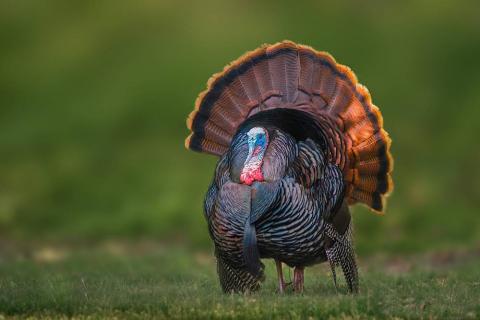Editor’s note: My first rod was a steel rod that had the backbone of a pool cue. My second rod was a fiberglass rod that was as limp as a wet noodle. But today’s rods for bass fishing have been built for efficiency, and serious bass fishermen often will have a boat full of different rods with various strengths, actions, and reels on them.
Bass Fish Efficiently with the Right Rod
with Ott DeFoe

Heavy-Action Rods:
I use a heavy-action rod when I’m flipping, pitching, and/or throwing an Alabama rig. I prefer a heavy-action rod with a fast tip when I’m casting a buzzbait because when I set the hook, I can set it hard and fast. A fast tip or a soft tip heavy-action rod actually will flex more when you’re casting the lures I’ve just described. You can make a more accurate cast and cast the lure farther than you can cast it if you don’t have a fast tip or a soft tip rod. The speed of the tip describes how much of the rod will bend when you’re casting. With a heavy-action rod with a fast tip, the rod will bend more in that first 1-1/2 feet of the rod than the rest of the fishing rod will.
Medium-Heavy Action Rods:
This rod is more or less an all-around casting rod that can be used for many bass-fishing situations and with a wide variety of baits. You can fish a plastic worm, a crankbait, a spinner bait, or a buzzbait with this rod. This rod has an even softer tip than the heavy-action rod does and actually will flex 2-1/2 to 3 feet down the rod. Depending on the rod’s length, this will increase your casting distance much more than a heavy-action fast-tip rod will. Anglers also are using longer rods than they once had, and usually, the majority of bass-fishing rods in an angler’s boat today will be seven feet long or more.
Light-Action Rods:
The types of fishing these fishing rods are most often used to fish are smaller finesse baits and light line. You want that fishing rod to be more forgiving. These rods will have about 3/4 of the rod that will flex, enabling you to fight the fish with lighter tackle. These rods are very effective and efficient when fishing the drop-shot rig, the shaky-head worm, or when finesse fishing for crappie with ultra light tackle.
It’s good to keep several types of fishing rods in the boat. You never know when a bad day of bass fishing with a heavy-action rod will turn into a good day of crappie fishing with an ultra light rod. Sometimes it just happens that way.
Crankbait Rods:
This rod is somewhat different from the other versatile rods I’ve mentioned. Often this rod is a fiberglass rod and has much more flex in it than the composite or graphite rods do. I’ll use a medium-action, often shorter rod, for crankbait fishing. The advantage to using the crankbait rod is due to the fact that it gives the lure to the fish, meaning that when the bass comes up to the bait and attacks that bait, this type of rod will flex and allow the bass to get more of the lure in its mouth than a composite or a graphite rod will. Too, this allows the angler to use a softer hook set than when fishing with a more stiff rod.
Today’s Specialty Rods
Today’s rods aid bass fishing efficiency as manufacturers have made specific rods for particular line classes and lures and various types of casting distances that the angler may need. All these newer rods are designed for certain types of fishing, with certain baits, under specific conditions. They are also rods designed to fish around certain types of structures. These specialty rods are designed to be the most efficient whether you’re fishing close, like around grass or in bushes, or whether you want to make a long cast and fish down a rock bluff or a weedline.
Choose your Rod Wisely
To choose a rod today, think about the different kinds of lures that will be most efficient on that rod, the distances you want to cast, the cover and structure you want to fish, and the type of fishing you will do. This explains why professional anglers and serious bass fishermen have so many different types of rods and reels when they fish for bass. Spending your money on a rod that matches the type of bass fishing you do — with the specific conditions you fish in — can mean more time catching fish and less time wishing you were catching fish.



























